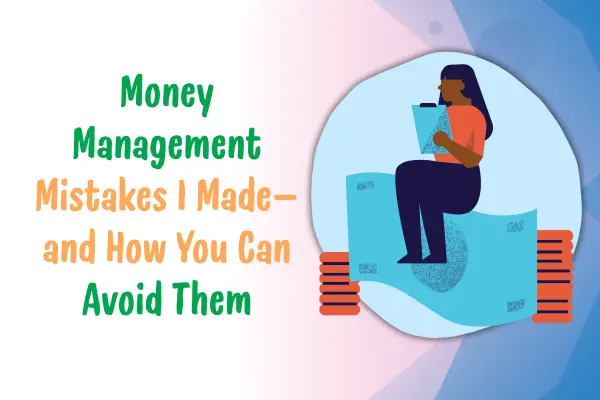When you’re preparing to take out a home loan, one of the biggest decisions you’ll face is choosing between a fixed and floating (variable) interest rate. This decision can significantly impact how much you pay monthly, the total amount you repay over time, and how stable your finances remain over the life of your loan.
In this post, we’ll break down what each rate means, how they affect your monthly payments, who they’re best for, and most importantly, which one could work best for you in 2025 and beyond — using clear examples in $ (USD).
🔍 What Is a Home Loan Interest Rate?
Before we dive into fixed vs floating, let’s first understand what a home loan interest rate is.
A home loan interest rate is the percentage charged by a lender on the principal loan amount. It determines how much extra you’ll pay over time for borrowing the money to buy a home. The lower the interest rate, the less you’ll pay in total.
Your monthly payment, often called EMI (Equated Monthly Installment), includes both the interest and a portion of the principal loan amount.
🔒 What Is a Fixed Interest Rate?
A fixed interest rate stays the same throughout your loan tenure — whether it’s 10, 20, or 30 years. That means your monthly EMI won’t change, no matter what happens in the economy or market interest rates.
✔️ Pros of Fixed Interest Rates
- Predictable Payments: You know exactly how much to budget each month.
- Protection from Rate Hikes: Even if market rates rise, your rate stays locked.
- Peace of Mind: There’s no need to track the market — your EMI remains constant.
❌ Cons of Fixed Interest Rates
- Usually Higher Than Floating Rates Initially: Lenders charge a premium for stability.
- Less Flexibility: Refinancing or switching loans can come with prepayment penalties.
💡 Example: Fixed Interest Rate
Suppose you take out a home loan of $300,000 at a fixed interest rate of 6.5% for 30 years.
- Monthly EMI: Around $1,896
- Total interest over 30 years: $382,633
- Total repayment: $682,633
You’ll pay the same $1,896 every single month — even if market rates go up to 7%, 8%, or more. You’re safe from any surprises.
🌊 What Is a Floating Interest Rate?
A floating interest rate, also called a variable rate, can go up or down during the loan period. It usually consists of:
- Base rate (set by the lender or linked to market benchmarks)
- Spread (a fixed margin added by the lender)
So if the base rate changes due to economic conditions, your EMI will also change.
✔️ Pros of Floating Interest Rates
- Lower Starting Rate: Usually starts cheaper than fixed rates.
- Potential Savings: If interest rates fall, your EMIs go down.
- More Flexible Terms: Prepayment and refinancing are generally easier.
❌ Cons of Floating Interest Rates
- Unpredictable EMIs: Monthly payments can increase unexpectedly.
- Budgeting Is Tricky: It’s hard to plan if you’re not sure what you’ll owe next year.
- Risk of Higher Total Interest: If rates rise significantly, you might end up paying more overall.
💡 Example: Floating Interest Rate
Let’s say you borrow $300,000 at a floating rate of 5.5% (initially lower than fixed), but over the next few years, rates increase.
- Year 1–2: 5.5% = Monthly EMI around $1,703
- Year 3–5: Rate increases to 6.5% = EMI goes up to $1,896
- Year 6–10: Rate rises to 7.5% = EMI becomes $2,097
Total interest paid could be more or less than a fixed rate, depending on how the rate changes over time.
🧠 Key Differences: Fixed vs Floating
| Feature | Fixed Interest Rate | Floating Interest Rate |
|---|---|---|
| Monthly EMI | Same every month | Changes with market |
| Interest Rate | Locked at loan start | Varies over time |
| Stability | High | Low |
| Starting Rate | Slightly higher | Usually lower |
| Risk | Low | Medium to High |
| Best For | Long-term planning | Flexible budgeting |
🎯 Who Should Choose Fixed Rates?
Fixed interest rates are a better choice if:
- You expect market rates to rise.
- You have a fixed monthly income and prefer consistent payments.
- You’re taking a long-term home loan (20–30 years).
- You’re risk-averse and don’t want surprises.
It’s like choosing a fixed-price menu. You know what you’re getting, even if prices rise elsewhere.
🚀 Who Should Choose Floating Rates?
Floating interest rates are a good fit if:
- You expect interest rates to stay the same or fall.
- You’re financially flexible and can handle changing EMIs.
- You’re planning to repay your loan early.
- You’re looking for lower EMIs upfront.
This option works well when you want to save in the short term or if you anticipate income growth.
💼 Real-Life Scenario Comparison
Let’s compare two homeowners:
📦 Emily — Fixed Rate
Emily takes a $250,000 loan at 6.5% fixed for 30 years.
- Monthly EMI: $1,580
- Total repayment: $568,887
- Peace of mind: ✅
💼 Alex — Floating Rate
Alex chooses a floating rate starting at 5.5%, increasing to 7% over 10 years.
- Year 1–2 EMI: $1,419
- Year 3–5 EMI: $1,610
- Year 6–10 EMI: $1,773
- Total repayment may cross $580,000 depending on rate hikes.
Alex enjoys initial savings but faces potential long-term risk.
🏦 Hybrid Options: Best of Both Worlds?
Some banks offer hybrid loans — fixed for the first few years, then floating.
Example: A loan fixed at 6% for 5 years, then switches to floating.
This option works well if you want early stability but are okay with future fluctuations.
📊 2025 Trends in Home Loan Interest Rates
- Interest rates are expected to remain volatile due to inflation and global market changes.
- Borrowers are leaning toward shorter loan terms with flexible options.
- Many are refinancing their fixed-rate loans to benefit from recent rate drops.
Being informed and comparing options can save thousands in interest over the life of your loan.
🔗 Want to Know What Your Loan Will Cost?
Try our easy-to-use, free Interest Calculator to find out exactly how much you’ll repay for any loan amount and interest rate.
Just enter your loan amount, rate, and term — and we’ll show your monthly EMI and total repayment in seconds.
📝 Final Thoughts: Which One Is Right for You?
There’s no universal answer. Your best option depends on:
- Your risk tolerance
- Your financial stability
- Market forecasts
- Loan term and amount
If you crave stability, go fixed.
If you want flexibility and potential savings, floating may suit you better.
Either way, take the time to understand your options, use tools like our interest calculator, and make the smartest decision for your financial future.
✅ Key Takeaways
- Fixed rates offer consistent EMIs and long-term stability.
- Floating rates offer potential short-term savings but come with uncertainty.
- Use a calculator to simulate real-world scenarios before deciding.
- Always assess your own financial situation, goals, and tolerance for risk.

